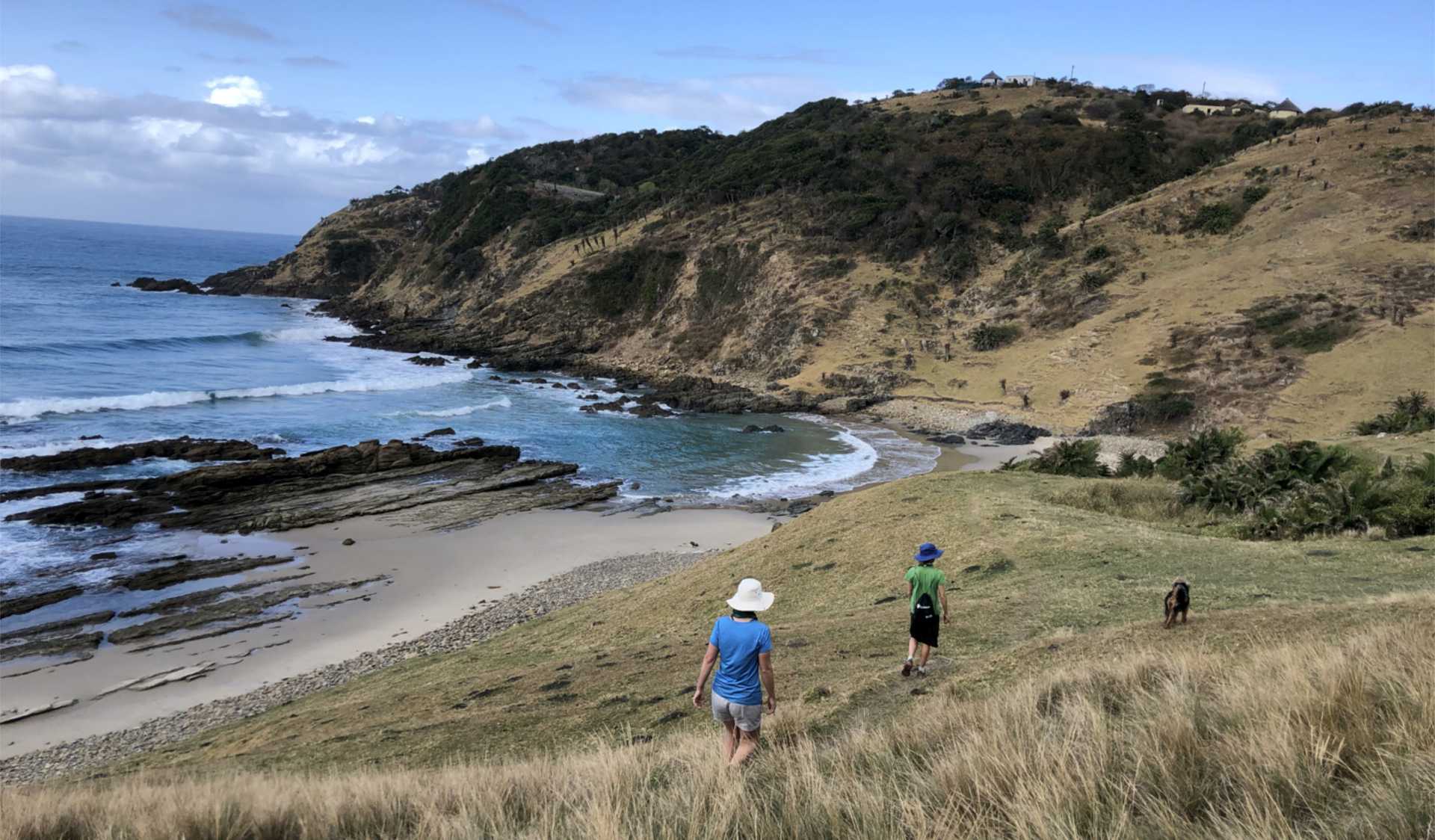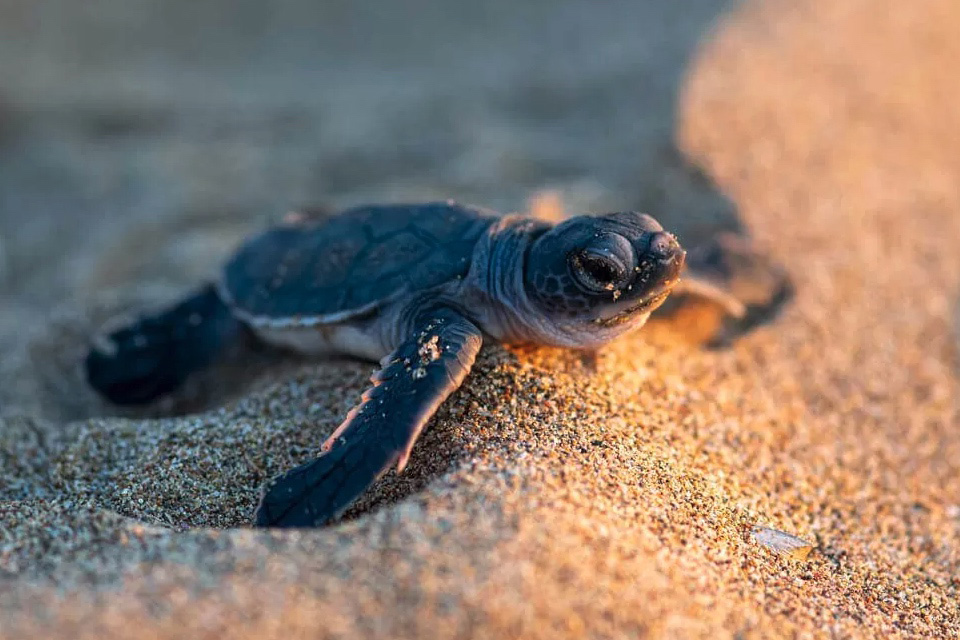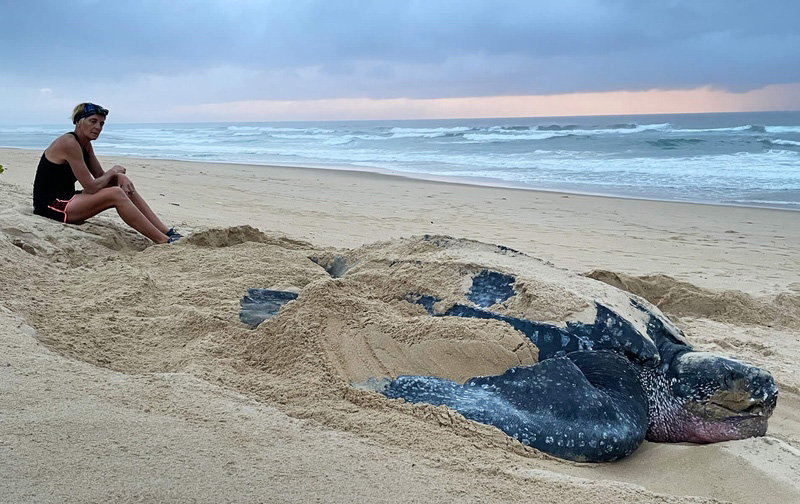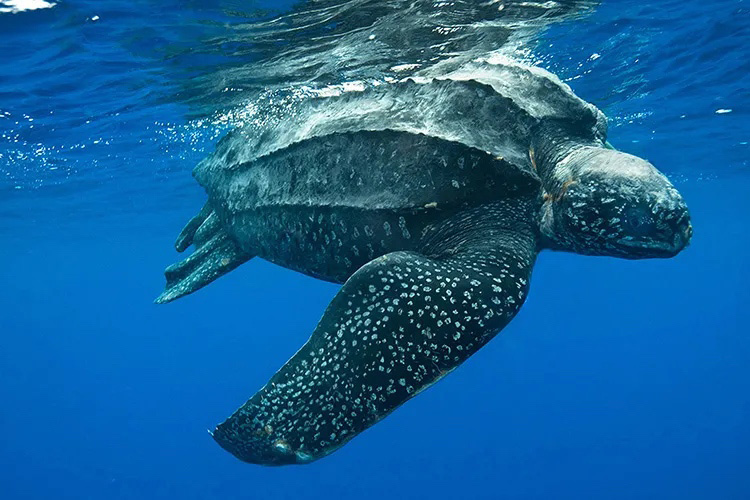Visit and Help Protect the Endangered Leatherback Turtle – Kosi Bay
From early November each year, the beaches of Bhanga Nek through to Mabibi, witness the arrival of the Loggerhead and giant Leatherback turtles, having made their way over 1000’s of miles to return to the same beach in which they were born, to lay their eggs. The average annual journey of a Leatherback is 6000 kms with the longest ever recorded journey being an incredible 16 000 kms! Whilst the Loggerheads travel an average of 3000 km per annual migration.
Sophisticated Marinal Navigation
How they navigate with innate GPS precision has mystified scientist’s for years, but it is thought that when hatchlings emerge, they imprint on the unique magnetic signature of their natal beach, to which they first return up to 35yrs later, using the Earth’s magnetic field as a map, and the ocean currents as their ‘highways’. It is also thought that they use celestial clues (the positioning of the sun and stars), olfactory and chemical cues, and even visual memory when they get closer to their birth beach. A premium inbuilt “Tracker”, system, which underscores the extraordinary evolutionary adaptations of these ancient mariners.
Life Cycles
After they start nesting, both species return to their nesting beaches every 2–3 years, laying multiple clutches of eggs (usually 3–7 clutches and 100 eggs a time) per nesting season. After such a laying feat, it is estimated that only 1 in 1000 – 10 000 actually make it to full maturity! These life patterns highlight the critical need to protect juvenile habitats and nesting beaches.
Eggs and the new hatchlings are invariably preyed upon by crabs, birds, lizards and other wily mammals. Hatchlings use the light horizon over the ocean to orient towards the water, so artificial lighting near beaches, can also disorientate them and lead to desiccation when they haven’t made it to the water by sunrise. For those that have successfully run the beach gauntlet, the open ocean still has high predation, strong ocean currents, poaching, fishing trawlers, nets and pollution to overcome.
Turtle Trails
From Nov-March on our Kosi Lakes and Turtle Trail’s, there is the opportunity to see this extraordinary life cycle in action, led by passionate and registered community Turtle Guides. Your permit fee also contributes towards the critical ongoing research and habitat conservation needed to help bolster survival rates and support the long-term population health of these gentle age-old creatures.



